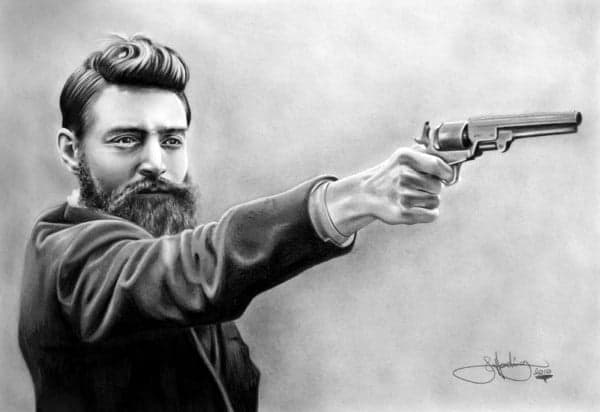Ned Kelly is one of the greatest folk heroes in Australian history as tales of his exploits have been exaggerated and romanticized. His life was brief, violent and memorable as he challenged authority and rebelled against landlords and the police. Kelly was born in the British colony of Victoria in December 1854, the son of an Irishman (John) who was deported for theft while his mother (Ellen) was second generation Irish.
His family was extremely poor and eked out a living on the edge of more fertile land north of Melbourne. John stole horses to help feed his family but was jailed after being caught and died in prison in 1866. Under these circumstances, it is no surprise that young Ned opted for a life of crime. His first arrest came at the age of 14 when he stole 10 shillings from a Chinese man.
He learned the bushranger trade from Harry Power, and in 1870, he was charged with being an accomplice to a robbery but walked free due to lack of evidence. His luck ran out later that year when he was convicted of other crimes and sentenced to 6 months in prison. Things went from bad to worse for Kelly when he received a 3-year prison sentence soon after his release for knowingly receiving a stolen horse. During his stints in prison, Kelly gained a reputation as the champion boxer in the Beechworth district.

Kelly worked honestly for two years after his release from prison, and his mother married a man named George King. By 1876, Kelly had enough of the straight and narrow and helped his stepfather steal horses. The Kelly family always believed they were victims of police persecution as two of his brothers spent time in prison, so they had no qualms about breaking the law.

The Formation of the Kelly Gang
The events of April 15, 1878 changed Kelly’s life forever. There was a warrant out for the arrest of his brother Dan and a police trooper called Arthur Fitzpatrick went to the Kelly home to arrest the fugitive. No one knows what happened on that day, but the constable claimed that Ned Kelly fired three shots at him after another member of the family hit him with a shovel. Other reports suggest there was a brawl with no shots fired but Ned and Dan fled to the bush.
Fitzpatrick was known to be a disreputable character, and his version of events is likely false. It is even believed that Ned wasn’t at the house when the constable arrived. In fact, he was dismissed from the police force soon afterward. Nonetheless, Ellen was sentenced to three years in prison for the attempted murder of Fitzpatrick. The Kelly brothers were joined by Steve Hart and Joe Byrne while in hiding, and the foursome became the Kelly Gang. Ned had threatened to try and break his mother out of jail, but instead, he settled for issuing a warning to the authorities; and soon, the Kelly Gang made good on their promise to open the eyes of the Victorian Police.

